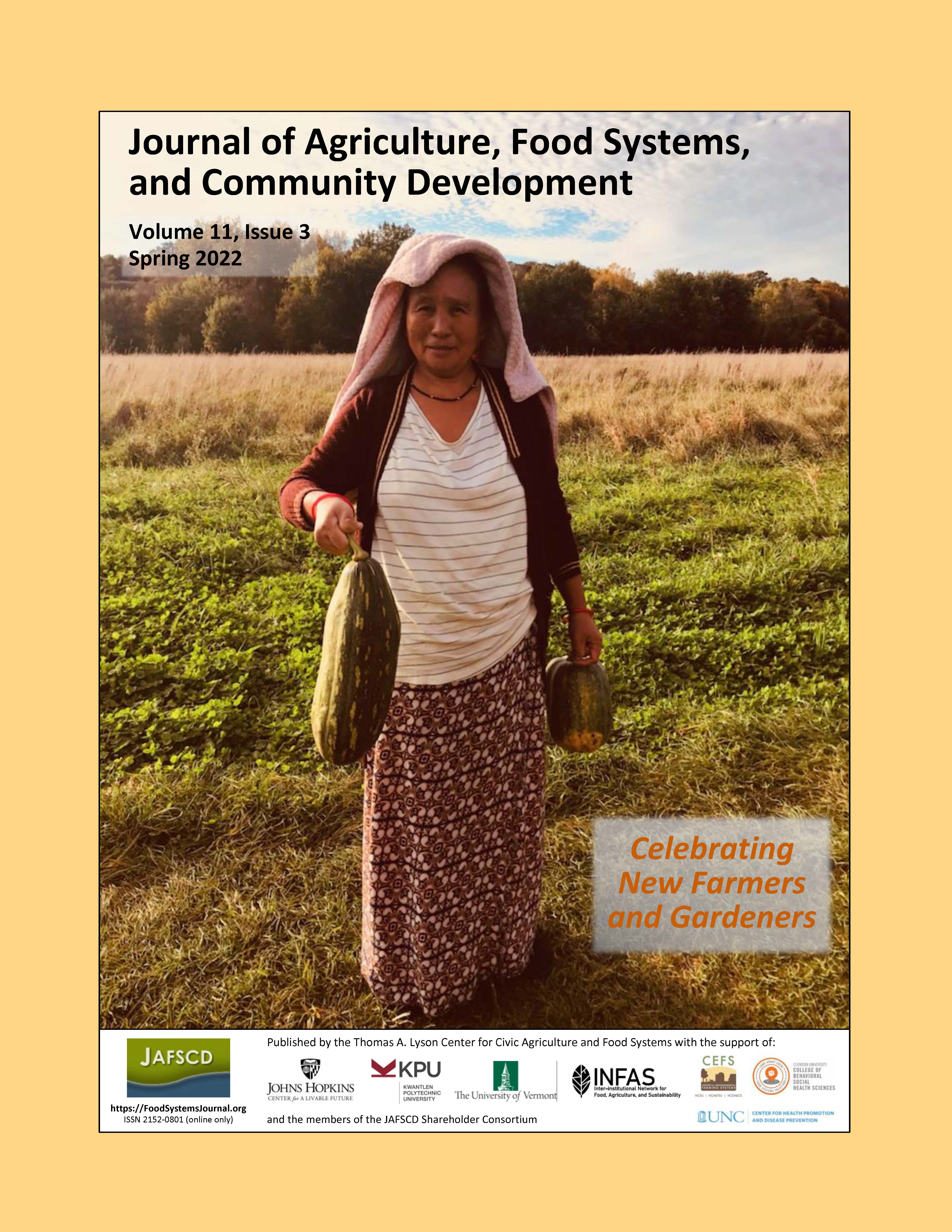Nepali Bhutanese refugee gardeners and their seed systems
Placemaking and foodways in Vermont
DOI:
https://doi.org/10.5304/jafscd.2022.113.005
Keywords:
Seed Systems, Placemaking, Refugee GardenersAbstract
As the world grapples with how to support the millions fleeing the ongoing war in Ukraine, attention must be extended to how these individuals, and the many others who are forcibly displaced in other parts of the world, can be welcomed to new lands. Research indicates that creating foodways through gardening can provide cultural connections for diasporic communities. However, few studies have addressed how necessary inputs, such as seeds, affect refugees’ abilities to reconstruct culturally significant foodways. Drawing on placemaking theory, this article explores if and how access to seeds and seed systems enables refugee gardeners to grow essential crops, which might be otherwise difficult to obtain, to produce foods reminiscent of their homelands. Focusing on Nepali Bhutanese refugee gardeners in Chittenden County, Vermont, we present findings from 30 semi-structured interviews demonstrating how refugee gardeners draw upon known practices and preferences to make a new land less foreign. Seed systems offer refugee gardeners the opportunity to access, plant, and save familiar crops and experiment with new planting techniques and crop varieties. This study indicates that seed systems are an important way through which people make place, both physically and symbolically.
Metrics
Downloads
Published
How to Cite
Issue
Section
License
Copyright (c) 2022 Junru Guo, Daniel Tobin, Teresa Mares

This work is licensed under a Creative Commons Attribution 4.0 International License.
The copyright to all content published in JAFSCD belongs to the author(s). It is licensed as CC BY 4.0. This license determines how you may reprint, copy, distribute, or otherwise share JAFSCD content.














